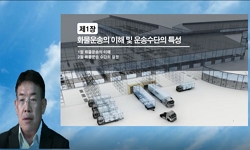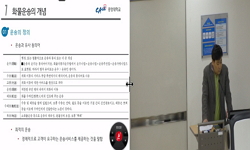본 연구는 상법 제6편 항공편 중 제896조 및 제897조를 중심으로, 항공기의 '운항'을 기준으로 규정의 적용 또는 준용 범위를 설정한 현행 상법 체계의 타당성과 한계를 분석한다. 항공운송산...
http://chineseinput.net/에서 pinyin(병음)방식으로 중국어를 변환할 수 있습니다.
변환된 중국어를 복사하여 사용하시면 됩니다.
- 中文 을 입력하시려면 zhongwen을 입력하시고 space를누르시면됩니다.
- 北京 을 입력하시려면 beijing을 입력하시고 space를 누르시면 됩니다.

상법상 항공기 규정의 의의 - 상법 제896조 및 제897조를 중심으로 - = A Study on the Aircraft Regulations under the Commercial Act - Focusing on Articles 896 and 897 of the Commercial Act -
한글로보기https://www.riss.kr/link?id=A109795263
-
저자
이창재 (조선대학교)
- 발행기관
- 학술지명
- 권호사항
-
발행연도
2025
-
작성언어
Korean
-
주제어
상법 986조 ; 상법 987조 ; 항공기 ; 초경량비행장치 ; 운항 ; 운송 ; Commercial Act Article 986 ; Commercial Act Article 987 ; Aircraft ; Ultralight Aircraft ; Operation ; Transportation
-
등재정보
KCI등재
-
자료형태
학술저널
- 발행기관 URL
-
수록면
243-275(33쪽)
- 제공처
-
0
상세조회 -
0
다운로드
부가정보
국문 초록 (Abstract)
현행 상법은 항공기의 기술적 성능이나 형식에 따라 적용범위를 설정하지 않고, 운항의 목적과 사용 형태를 기준으로 규정의 적용 여부를 판단하도록 하고 있다. 상법은 제896조에서 초경량비행장치를 명시적으로 상법 적용대상에서 제외하고 있으나, 드론을 활용한 유상 운송이나 상업적 운항이 현실화되고 있는 오늘날의 상황에서는 이와 같은 입법공백이 실질적인 규범적 누락으로 이어질 우려가 있다.
더욱이 상법은 국제항공운송의 책임체계를 규율하는 몬트리올협약(Montreal Convention, 1999)과 달리 ‘운송’이 아닌 ‘운항’을 중심으로 규범의 적용범위를 설정하고 있어, 양 체계 간 규범적 충돌과 해석상 혼란이 발생할 여지가 크다. 운항, 비행, 운송과 같은 유사 개념들이 입법 및 판례에서 혼용되고 있는 현실은 법적 책임 귀속의 경계를 모호하게 만들며, 특히 비정형적 탑승자(예: 승무원, deadhead, 무단승객 등)의 법적 지위 판단에 있어 기준의 명확성을 저해하고 있다.
본 논문은 이러한 문제의식 아래 상법 제896조 및 제897조의 문언과 입법취지를 분석하고, 관련 국제협약 및 국내 항공 관련 개별법과의 체계적 관계를 검토함으로써, 상법 항공편 규정의 해석상 쟁점과 적용범위 설정의 문제점을 도출하였다. 나아가 초경량비행장치의 상업적 운항에 대한 상법의 부분 적용 가능성, ‘운항’ 개념의 법적 정의 정비, 국제협약과의 정합성 확보를 위한 입법적 개선 방향을 제안함으로써, 항공법제의 체계성과 실효성을 제고하는 데 기여하고자 한다.
본 연구는 상법 제6편 항공편 중 제896조 및 제897조를 중심으로, 항공기의 '운항'을 기준으로 규정의 적용 또는 준용 범위를 설정한 현행 상법 체계의 타당성과 한계를 분석한다. 항공운송산업은 여객 및 화물의 국제적 이동을 담당하는 핵심 기반산업으로서 기능하고 있으며, 최근에는 드론(Unmanned Aircraft System, UAS) 및 도심항공모빌리티(Urban Air Mobility, UAM)와 같은 신기술 기반 항공서비스의 상용화가 본격화되면서 항공기를 매개로 한 법률관계가 한층 복잡하고 다층화된 양상으로 전개되고 있다. 이에 따라 항공기 사고, 운송계약, 제3자 손해배상, 운항책임 등과 관련된 법적 분쟁의 잠재적 가능성도 증가하고 있다.
현행 상법은 항공기의 기술적 성능이나 형식에 따라 적용범위를 설정하지 않고, 운항의 목적과 사용 형태를 기준으로 규정의 적용 여부를 판단하도록 하고 있다. 상법은 제896조에서 초경량비행장치를 명시적으로 상법 적용대상에서 제외하고 있으나, 드론을 활용한 유상 운송이나 상업적 운항이 현실화되고 있는 오늘날의 상황에서는 이와 같은 입법공백이 실질적인 규범적 누락으로 이어질 우려가 있다.
더욱이 상법은 국제항공운송의 책임체계를 규율하는 몬트리올협약(Montreal Convention, 1999)과 달리 ‘운송’이 아닌 ‘운항’을 중심으로 규범의 적용범위를 설정하고 있어, 양 체계 간 규범적 충돌과 해석상 혼란이 발생할 여지가 크다. 운항, 비행, 운송과 같은 유사 개념들이 입법 및 판례에서 혼용되고 있는 현실은 법적 책임 귀속의 경계를 모호하게 만들며, 특히 비정형적 탑승자(예: 승무원, deadhead, 무단승객 등)의 법적 지위 판단에 있어 기준의 명확성을 저해하고 있다.
본 논문은 이러한 문제의식 아래 상법 제896조 및 제897조의 문언과 입법취지를 분석하고, 관련 국제협약 및 국내 항공 관련 개별법과의 체계적 관계를 검토함으로써, 상법 항공편 규정의 해석상 쟁점과 적용범위 설정의 문제점을 도출하였다. 나아가 초경량비행장치의 상업적 운항에 대한 상법의 부분 적용 가능성, ‘운항’ 개념의 법적 정의 정비, 국제협약과의 정합성 확보를 위한 입법적 개선 방향을 제안함으로써, 항공법제의 체계성과 실효성을 제고하는 데 기여하고자 한다.
다국어 초록 (Multilingual Abstract)
The current Commercial Act determines the scope of its application not by the aircraft’s technical features or specifications, but by the purpose and form of its operation. Although under the articles 896 ultralight aircraft are explicitly excluded from the scope of the Act, the growing use of drones in commercial transportation and other profit-driven operations suggests a potential regulatory gap that could lead to practical legal voids.
Additionally, unlike the Montreal Convention (1999), which governs international air carrier liability based on the existence of a carriage contract, the Korean Commercial Act focuses on “operation” rather than “carriage” as the basis for applying its rules. This structural divergence increases the likelihood of normative conflict and interpretative uncertainty between domestic law and international treaties.
This paper examines the legislative intent and wording of Articles 896 and 897 and analyzes their relationship with related domestic laws and international agreements. Based on this analysis, the paper identifies key issues regarding the scope and interpretation of aviation provisions under the Commercial Act. It also proposes legislative improvements, including a partial application of the Act to profit-oriented operations of ultralight aircraft, clarification of the legal definition of “operation,” and harmonization with international aviation conventions.
This study analyzes the validity and limitations of the current framework of the Korean Commercial Act (KCA), particularly Articles 896 and 897 of Part VI (Aviation transport), which define the scope of application or mutatis mutandis application of t...
This study analyzes the validity and limitations of the current framework of the Korean Commercial Act (KCA), particularly Articles 896 and 897 of Part VI (Aviation transport), which define the scope of application or mutatis mutandis application of the Act based on the notion of “operation” of aircraft. As the air transport industry functions as a core national infrastructure facilitating both domestic and international movement of passengers and cargo, legal relationships involving aircraft have become increasingly complex. This trend has intensified with the commercialization of new aviation technologies such as Unmanned Aircraft Systems (UAS, commonly known as drones) and Urban Air Mobility (UAM), further increasing the potential for legal disputes involving air accidents, carriage contracts, third-party liability, and operational responsibilities.
The current Commercial Act determines the scope of its application not by the aircraft’s technical features or specifications, but by the purpose and form of its operation. Although under the articles 896 ultralight aircraft are explicitly excluded from the scope of the Act, the growing use of drones in commercial transportation and other profit-driven operations suggests a potential regulatory gap that could lead to practical legal voids.
Additionally, unlike the Montreal Convention (1999), which governs international air carrier liability based on the existence of a carriage contract, the Korean Commercial Act focuses on “operation” rather than “carriage” as the basis for applying its rules. This structural divergence increases the likelihood of normative conflict and interpretative uncertainty between domestic law and international treaties.
This paper examines the legislative intent and wording of Articles 896 and 897 and analyzes their relationship with related domestic laws and international agreements. Based on this analysis, the paper identifies key issues regarding the scope and interpretation of aviation provisions under the Commercial Act. It also proposes legislative improvements, including a partial application of the Act to profit-oriented operations of ultralight aircraft, clarification of the legal definition of “operation,” and harmonization with international aviation conventions.
동일학술지(권/호) 다른 논문
-
- 한국상사판례학회
- 장윤제 ( Jang Youn-je )
- 2025
- KCI등재
-
국내 가상자산 현물 ETF의 도입 가능성에 대한 법적 검토 - 비트코인 현물 ETF 중심으로 -
- 한국상사판례학회
- 김재환
- 2025
- KCI등재
-
내부통제시스템에 관한 이사의 감시의무와 경영판단원칙 - 미국 델라웨어주 판례법상 Caremark 기준과 경영판단원칙의 관계를 중심으로 -
- 한국상사판례학회
- 문정해
- 2025
- KCI등재
-
유통채널별 중소입점업체 보호를 위한 규제격차 해소방안 - 판매수수료 규제를 중심으로 -
- 한국상사판례학회
- 문상일
- 2025
- KCI등재




 KCI
KCI KISS
KISS






